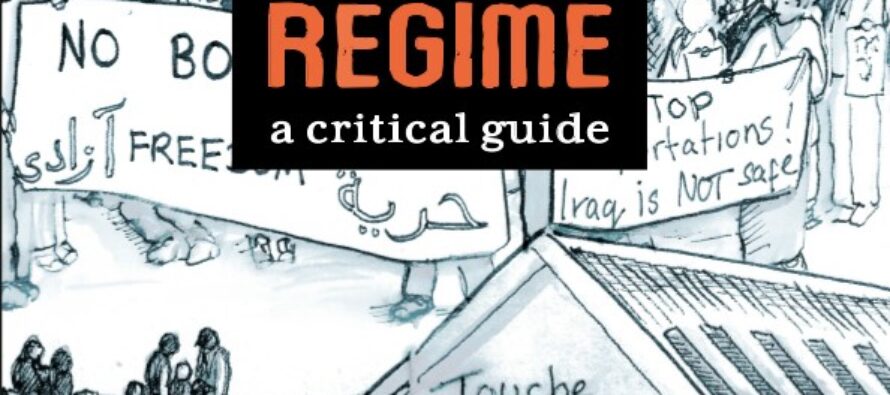NEW BOOK. The UK Border Regime – a critical guide

![]()
The UK Border Regime: a critical guide is now out.
This brings together Corporate Watch’s recent research on the “hostile environment” against migrants in the UK, and the companies that profit from it. It also includes a lot of new research and analysis, and looks at the history of recent migration struggles in the UK, asking what has been effective.
You can download it for free here. And you can order paper copies here in Corporate Watch’s online shop. (It will be in bookshops soon too).
“We will be glad to send copies for free to asylum seekers and other people without papers. For other people and groups fighting the border regime, we can send at cost price or whatever you can afford to donate. Email us on contact[AT]corporatewatch.org.”
The UK Border Regime
Throughout history, human beings have migrated. To escape war, oppression and poverty, to make a better life, to follow their own dreams. But since the start of the 20th century, modern governments have found ever more vicious ways to stop people moving freely.
The UK border regime includes the razor wire fences at Calais, the limbo of the asylum system, and the open violence of raids and deportations. Alongside the Home Office, it includes the companies running databases and detention centres, the media pushing hate speech, and the politicians posturing to win votes. It keeps on escalating, through Tony Blair’s war on refugees to Theresa May’s “hostile environment”, spreading fear and division.
This book describes and analyses the UK’s system of immigration controls. It looks at how it has developed through recent history, the different actors involved, and how people resist. The aim is to help understand the border regime, and ask how we can fight it effectively.
You can read the introduction and summary of the book here.
And see the full table of contents below.
Table of Contents
Introduction, Acknowledgements, Summary
Part One: Background
1. A brief history of the UK border regime
2. The Home Office: an overview
3. Sorting people
4. What is the border regime?
Part Two: Control
5. In limbo: reporting, dispersal, destitution
6. Immigration raids
7. Detention
8. Deportation
9. Calais (the ultimate “hostile environment”)
10. The “hostile environment”: making a nation of border cops
11. Hostile data
12. The logic of hostility: how collaboration works
13. Does immigration control work? The deterrent dogma
Part Three: Consent
14. Public opinion: target publics
15. Media: communication power
16. Politicians
17. Corporate power
18. Agitators
19. Anxiety engine
Part Four: How can we fight it?
20. Fighting the border regime
Annexes
Annex 1. Border profiteers: list of major Home Office immigration contracts
Annex 2. Border profiteers: company mini-profiles (G4S, Serco, Mitie, GEO, Carlson Wagonlit, Titan Airways)
Further reading
Source
Corporate Watch is a not-for-profit co-operative providing critical information on the social and environmental impacts of corporations and capitalism.
Creative Commons Attribution-NonCommercial 3.0 Unported License.
Links
UK Border Regime: Detention Centres briefing October 2018
As you read this, around 2,000 people are locked up without trial or time limit in the Home Office’s immigration detention centres.
UK Border Regime: a brief history of resistance to immigration detention
Detention centres have always been amongst the most active sites of migrant struggle in the UK. Inside, resistance takes numerous forms: small everyday acts of refusal and solidarity, sit-in protests and hunger strikes, escapes, and sometimes major outbreaks of revolt. The most famous of these was the Yarl’s Wood uprising in 2002, which permanently destroyed half of the new centre just a few months after it opened.
Related Articles
After film, new book sheds light on Dersim Operation
![]()
ISTANBUL – Hürriyet Daily News The new book by Kaz?m Gündo?an and his wife Nezahat Gündo?an includes 150 different
Diego Rivera: public art, private museums
![]()
Hamid Dabashi Hamid Dabashi is Hagop Kevorkian Professor of Iranian Studies and Comparative Literature at Columbia University. Columbia UniversityThe display
Detenido el rapero Pablo Hasél por presunta apología del terrorismo
![]()
Hasél ha sido arrestado en Lleida por ensalzar a un miembro de los Grapo PÚBLICO.ES Madrid Agentes de la Brigada


